
[175] Hirundo rustica, Barn Swallow
Delichon urbicum, House Martin
Riparia riparia, Sand Martin
Introduction
Hirundo rustica, the Barn Swallow, is a summer visiting bird that spends almost all of its life in flight. Delichon urbicum, the (Common) House Martin and Riparia riparia, the (European) Sand Martin (or Bank Swallow) are two similar species.
About a hundred species in the family Hirundinidae are called either swallows or martins. There is no real distinction between the two terms but species with longer pointed tails tend to be called swallows.
Within most of Europe, Hirundo rustica is our only species of swallow so it us usually just called a Swallow.
Taxonomy
Kingdom – Animals
Phylum – Chordates
Class – Aves (Birds)
Order – Passeriformes (Perching Birds)
Suborder – Passeri (Songbirds)
Infraorder – Passerida (All songbirds except Corvids)
Superfamily – Sylvoidea (Mostly small, Old World insectivores)
Family – Hirundinidae (Swallows and Martins)
Subfamily – Hirundininae (Almost all Hirundinidae)
Genus – Hirundo
Scientific Name – Hirundo rustica
See text for other species.
Name
Swallow is an old name for the bird comi,ng from Old Norse and Germanic roots. Martin comes from the male given name, which comes from the Roman god Mars.
Hirundo is the Latin for a swallow and rusticus (feminine rustica) means ‘of the country.’
Delichon is an anagram of Chelidon, coming from Ancient Greek khelidon meaning the swallow. [A bit of taxonomic redefinition moved species from what used to be the genus Chelidon.] Urbicus means urban or ‘of the town.’
Riparia is Latin for ‘of the river banks.’
Hirundines
We can consider the three UK species together. They are small birds with a streamlined shape that enables them to fly continuously catching insects to eat. They have excellent vision and are very manoeuvrable in flight.
When birdwatchers go out together, they like to call out species to add to their group list for the day. It is fairly common to identify these birds in flight and call them hirundines, leaving more precise identification to closer inspection through binoculars.
They come to Britain to mate, nest and rear their young and then leave.
All three of our species disappear completely in winter and until relatively recently we did not know where they went. I remember about twenty years ago reading that millions of Martins had been ringed in Britain but none of the ringed birds had ever been found abroad. Now we have much better knowledge of their movements.
Swallows
Hirundo rustica has long, deeply forked tail that distinguishes it from our two martins. The differences are clearer if you can see a settled bird. Its upperparts are a dark blue, the front of its face is dark red and its underparts are white.



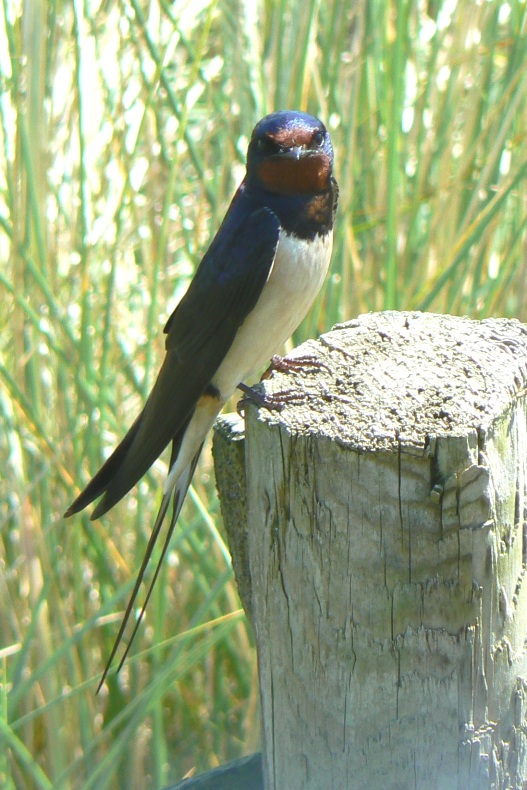
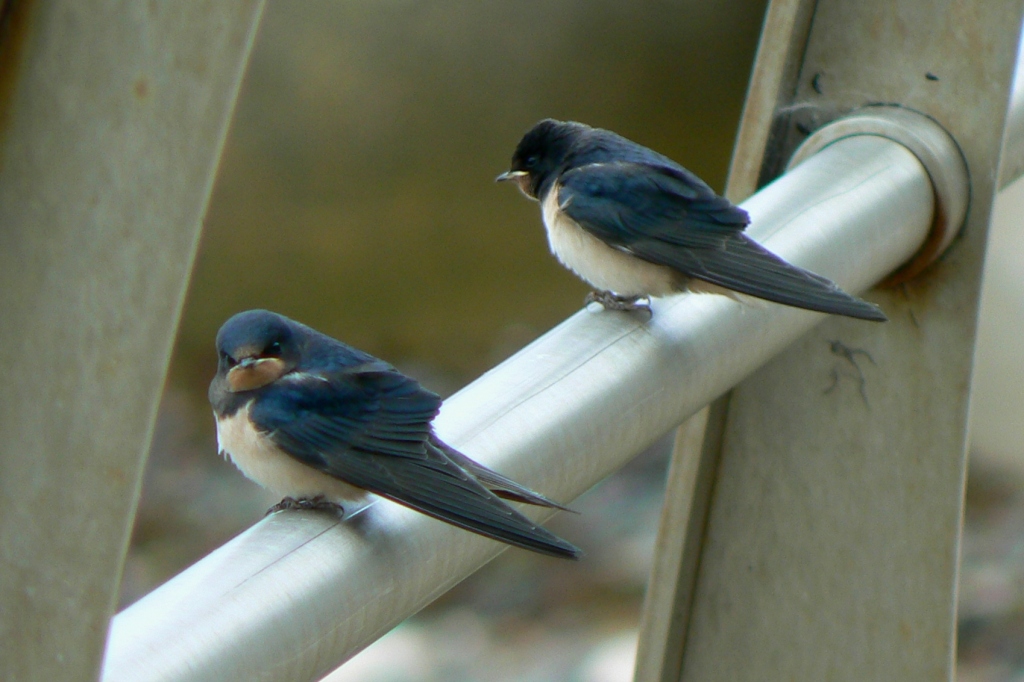
Unlike the two Martins, you may see Swallows resting, normally high up in trees or on telegraph wires. They may do this in small flocks and are often seen resting soon after their arrival in Spring.
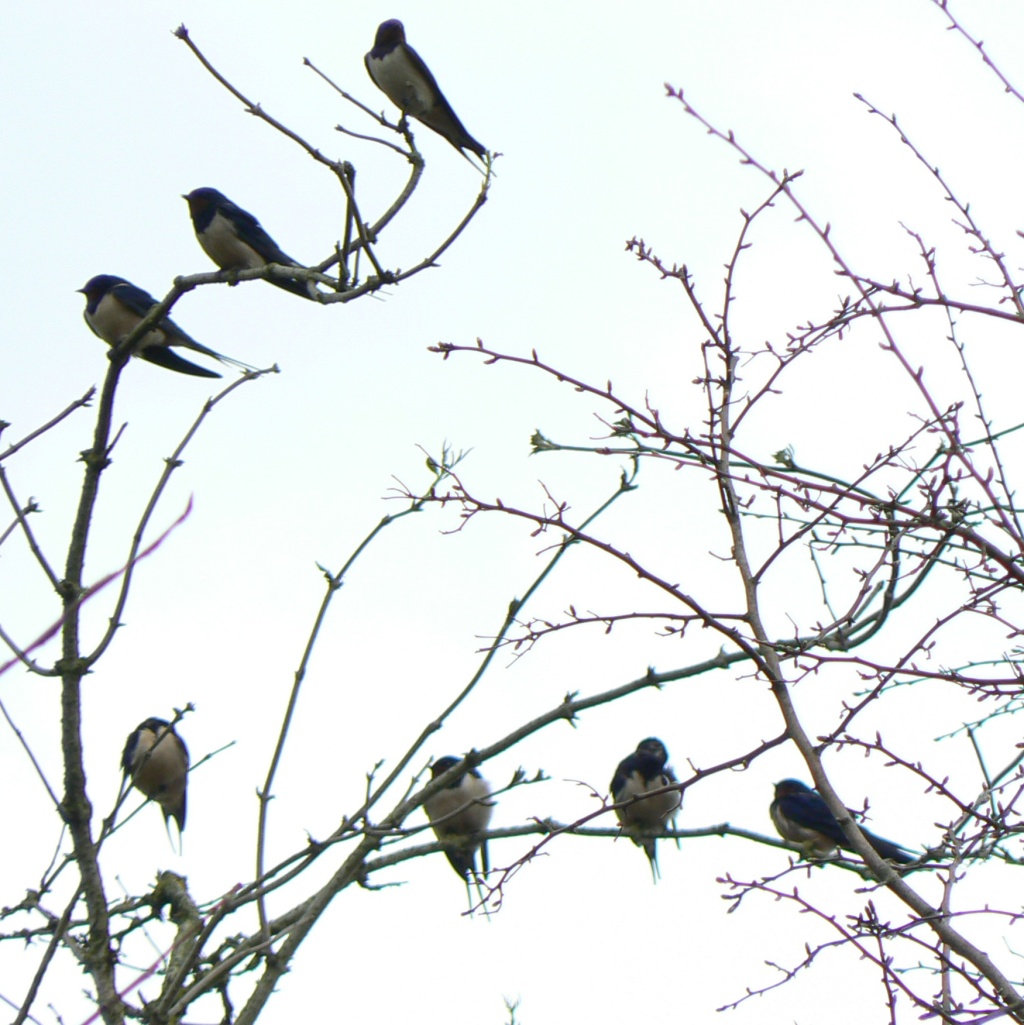

The Swallow spends its time catching insects in flight and is often seen in groups flying very low over water or open land. Sometimes you can see them drinking over water by skimming the surface in flight.
It builds a cup-shaped nest from mud, often in buildings like stables. They generally produce two broods.

Here are two pictures of a recently fledged Swallow and one of a bird gathering mud for its nest.
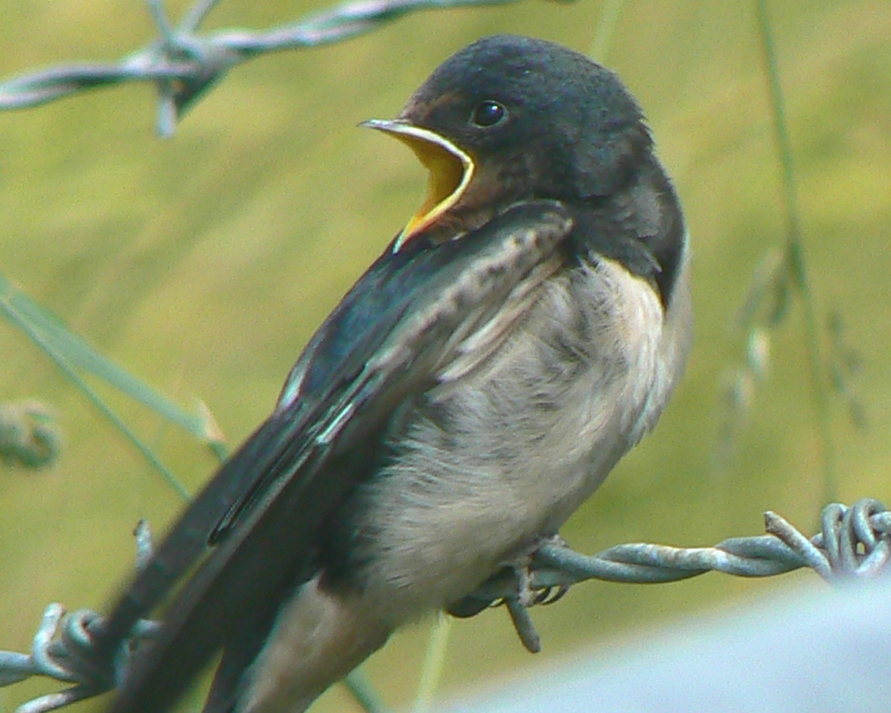


In summer Swallows are found all over Eurasia except the Arctic North and the Far South of Asia, and North America. In winter they move to the Southern half of Africa, India, southeast Asia, Indonesia and the Northern edge of Australia, and South America. There is a very small margin of overlap where they may be found all-year round. There are six subspecies covering six geographical areas.
The Swallow is the National Bird of Austria and Estonia
House Martin
Delichon urbica lacks the Swallow shaped tail but is otherwise very similar in shape and behaviour. It has very dark blue and black upperparts and white underparts, with a white rump that is evident in flight.
It builds a cup-shaped nest, often outside buildings.
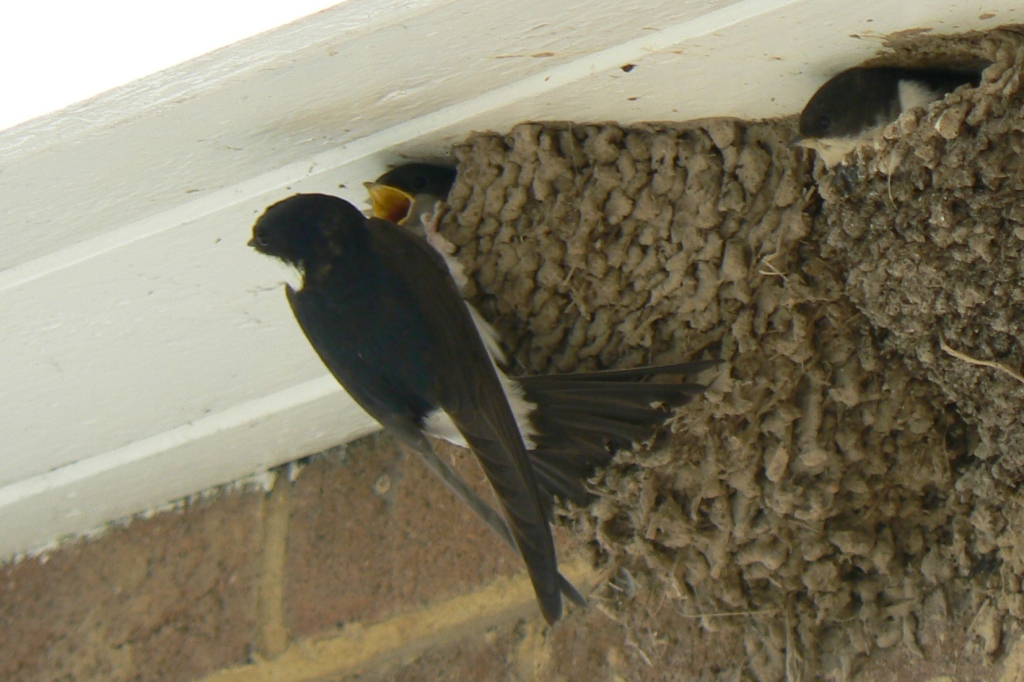
They tend to build a group of nests together and normally rear two broods each year before departing back to Africa.
The House Martin has a distribution similar to the Barn Swallow but is not found in the Americas. They are widespread in Britain but much rarer than Swallows.
The species is close enough to Hirundo to occasionally produce hybrid offspring.
Sand Martin
Riparia riparia has dark brown upperparts and white underparts with a narrow dark band just below its neck.
Its summer range is Europe, Northern Asia and North America and it winters in Southern Africa and South America,
They nest in tunnels by riverbanks, much like [014] the Kingfisher. Their distribution in the UK is limited by the need to fid suitable locations to nest. Some wildlife reserves with wetland locations have nesting boxes for them.
I find them most often in the area of the Cotswold Water Park.
See also
The (Common) Swift, Apus apus, comes from a separate family called Apodidae, which means without feet. This puts them closer to hummingbirds than passerine birds. They have very small feet, which they don’t use for most of their lives. When a newly fledged Swift leaves the nest, it will probably not leave the air for at least three years – and then only to nest and feed young chicks. They are larger than swallows and martins and have longer bodies and wings. Otherwise, convergent evolution has made them similar.
They tend to fly and hunt much higher in the sky but you may see them, generally in small groups, and hear their screeching calls in flight but you will never see one on land (unless you are lucky enough to have a swift nesting box.) They nest in holes and crevices as well as nesting boxes. They cannot take flight from ground level.
They winter in southern Africa and visit the UK (and much of Eurasia) to breed in Summer. They are always the last of our Summer visiting species to arrive and the first to leave. Round about the First of August they gradually congregate in larger flocks before leaving.
Swift has always been the name of this bird and the word has always meant fast. I am not sure which meaning came first.
